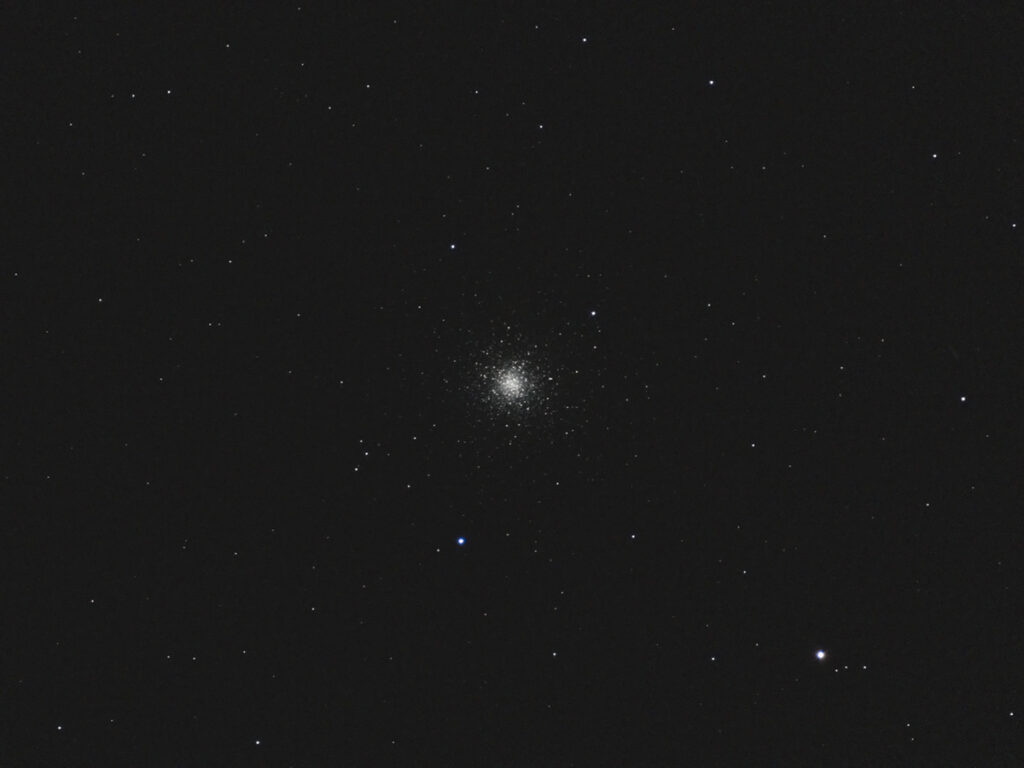
Telescope: Unitron 155c 4” f/15
Camera: Canon EOS Ra full frame DSLR
Filter: 2” GSO IR Cut Filter
Guide scope: None
Exposure: 24 (of 32)x15sec, ISO 6400, saved as RAW
Darks: Internal (Long Exposure Noise Reduction)
Flats: 32×1/20s tee shirt flats taken at dusk
Average Light Pollution: Bortle 8, poor transparency, haze, low altitude
Lensed Sky Quality Meter: 18.2 mag/arc-sec^2
Stacking: Mean with a 1-sigma clip
White Balance: Nebulosity Automatic
Software: Backyard EOS, Deepsky Stacker, Nebulosity, Photoshop
This is the first test image taken with my Unitron 155c using it in it’s stock configuration with it’s original German equatorial mount ans synchronous clock drive. I was pleasantly surprised that the telescope was very easy to point using the setting circles and it was relatively easy to find and center the target. The tracking was very good and similar to modern unguided mounts. I found that I could get 70%-90% successful subs using 15 second exposures. Once the drive settled down 80-90% was more typical. Polar alignment using a QHY Polemaster was quick, easy, and accurate. This is a pre-1966 model which does not have a slow motion adjustment for the R.A. once the clock drive is installed, but I found that all I had to do was to point the telescope slightly east of the target and then turn the clock drive off, let it drift to the center of the field, and then turn the clock drive back on. The drive ran perfectly off of the 120VAC output from my lithium ion battery. The field of view of the EOS Ra was generous and the camera was sensitive enough to show the target on the screen in the live view frame and focus mode.
M3 is a beautiful example of a globular cluster in a relatively lonely stretch of sky. The cluster is a member of the galactic halo and spends much of its time orbiting well outside the plane of the galaxy. It is presently 33,000 light years away from us, 40,000 light years from the galactic core, and 33,000 light years ‘above’ the galactic plane. Home to about 500,000 stars, M3 is relatively young as globular clusters go with an estimated age of 8 billion years.
M3 is currently well placed rising in the northeast during the early evening.
Recent Comments